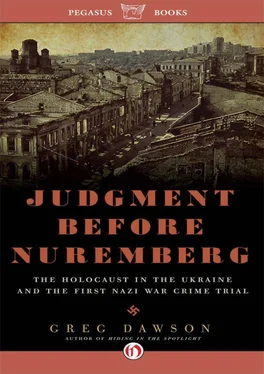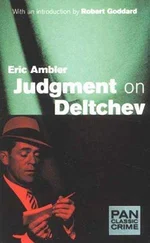“I soon uncovered a quantity of building stone and mortar,” Montresor says. “With these materials and with the aid of my trowel, I began vigorously to wall up the entrance of the niche. I had scarcely laid the first tier of the masonry when I discovered that the intoxication of Fortunato had in a great measure worn off. The earliest indication was a low moaning cry from the depth of the recess. I laid the second tier, and the third, and the fourth; and then I heard furious vibrations of the chain. The noise lasted for several minutes. That I might hearken to it with more satisfaction, I ceased my labors and sat down upon the bones.
“When at last the clanking subsided, I resumed the trowel, and finished without interruption the fifth, the sixth, and the seventh tier. The wall was now nearly upon a level with my breast. I again paused, and holding the flambeaux over the mason work, threw a few feeble rays upon the figure within. A succession of loud and shrill screams, bursting suddenly from the throat of the chained form, seemed to thrust me violently back. I thrust a torch through the remaining aperture and let it fall within. There came forth in return only a jingling of the bells. My heart grew sick; it was the dampness of the catacombs that made it so. I hastened to make an end to my labor. I forced the last stone into its position. I plastered it up. Against the new masonry I re-erected the old rampart of bones. For the half of a century no mortal has disturbed them. In pace requiescat! ”
After the region was liberated in late 1943, Soviet investigators examined the quarry at Artyomovsk. “The cave was full of human corpses, pressed up against each other with their backs to the tunnel’s entrance,” they reported. “The corpses were pressed so close to each other that they appeared at first glance to be a single solid form. Due to the unique conditions in the cave (dry air, steady low temperatures) the corpses had undergone a mummification process and most of them had been excellently preserved. It was possible to see on most of the corpses a white arm band on which a Star of David had been painted or stitched around the left sleeve of their coats.”
The Germans could have murdered the Jews of Artyomovsk in the same manner they did most Jews in Ukraine—by bullets, at the edge of a ravine. A leap of imagination was required to bypass routine. What manner of mind, of cold-blooded efficiency crossed with a perverted flair for the dramatic, would eschew bullets for the final solution at Artyomovsk?
Yes, the mind of our fictional doppelganger Col. Hans Landa. It is easy to imagine Landa as the commanding officer at Artyomovsk, observing with giddy aesthetic pleasure as soldiers applied mortar to the final bricks of the wall entombing the three thousand Jews, and exclaiming with delight, as he did in Inglourious Basterds:
“Ooh, that’s a bingo!”
When I set out in 2000 to do research for my mother’s biography, Hiding in the Spotlight , I could count on one hand the high-profile Nazis in my mental Holocaust file: Hitler, Himmler, Göring, Goebbels, Rommel—who thanks to James Mason in Desert Rats didn’t even seem like a Nazi—and maybe Heydrich or Keitel on the other hand if I also included the History Channel.
The first name I encountered outside this circle of usual suspects was Paul Blobel. It wasn’t random. I had gone looking for the men who murdered my grandparents and great-grandparents. Blobel was leader of Sonderkommando 4a, a unit of Einsatzgruppe C, one of four mobile-killing squads that followed in the path of the Wehrmacht across the Soviet Union shooting Jews. Blobel’s unit was assigned to northern Ukraine, including Kharkov, where my mother lived.
Sonderkommando 4a arrived in Kharkov on October 21, 1941, and promptly began public hangings—from lamp posts, trees, balconies, statues—116 in the first two weeks, according to Yuri Radchenko, a young Holocaust historian I met in Kharkov who showed me the landmarks of Nazi occupation. Two months later, elements of Blobel’s unit, aided by German Special Order Police and Ukrainian collaborators, marched 16,000 Kharkov Jews to the killing fields of Drobitsky Yar, my mother, her sister, and her parents and grandparents included.
While Blobel had special significance for me personally, he is worth examining more closely for other reasons. There were Einsatzgruppe commanders guilty of killing more Jews—Otto Ohlendorf freely confessed to 90,000—and others with more interesting and paradoxical backgrounds: before signing up to commit mass murder, the aforementioned Waldemar Klingelhofer made his living as an opera singer, while another, Ernest Biberstein, had been an ordained Protestant minister.
Blobel is intriguing because he was the Zelig of Einsatzgruppe commanders, present at the two most important events—both real and symbolic—of the Holocaust in Ukraine. Indeed, together they express both the full destructive fury and the deluded, self-immolating futility of the entire Nazi enterprise in a way that the gas chambers of Auschwitz and Sobibor and Treblinka do not. Those gated abattoirs, after all, were created in large measure as alternatives to the open-air slaughter and highly public crime scenes in Ukraine.
In September 1941, Blobel supervised the murder of 34,000 Jews in just two days at Babi Yar outside Kiev—the most iconic massacre of the Holocaust that did not use gas, and the largest to that date in the war. Babi Yar is the only Ukrainian place name from the Holocaust that’s a household word in some American homes, thanks to the 1961 poem of the same name by Yevgeny Yevtushenko. Blobel’s other claim to infamy was, arguably, the most gruesome task given to any German officer during the war. As the Germans were retreating from Ukraine in 1943, and the Soviet press began to report the discovery of mass killing sites in areas liberated by the Red Army, Blobel was put in charge of “Aktion 1005”—an attempt to destroy the evidence of Nazi genocidal crimes by digging up and burning the bodies, a million corpses in thousands of graves across a country the size of Texas, a task to make Sisyphus grateful for his rock and his hill. Whether by design or accident, the man and the mission were perfectly matched: both were nearly insane.
In January 1942, Blobel had been relieved of his Sonderkommando duties by SS-Obergruppenfuhrer Heydrich and sent to Kiev to await reassignment. A Catholic priest who dined with Blobel shortly before his dismissal said Blobel was “entirely exhausted, to the point where he was no longer competent.” He also seemed to be nurturing a ghoulish satisfaction with his recent commanding of the blood bath at Babi Yar. Riding past the ravine with the same priest, Blobel smiled and made a sweeping gesture with his arm: “Here live my thirty thousand Jews.” At Blobel’s trial after the war, his adjutant said Blobel suffered a nervous breakdown in July 1941 after the slaughter of three thousand Jews in Zhitomyr. “He was talking confusedly. He was saying it was not possible to shoot so many Jews and that what was needed was a plough to plough them into the ground. He had completely lost his mind.”
With his beard, gaunt face, and feral eyes, Blobel stood out from his clean-shaven, robust, and neatly coiffed Einsatz comrades who out of uniform resembled a group of bankers or importers-exporters. As historian Hilary Earl noted, Blobel was the only defendant who seemed to physically personify the evil he committed. Judge Michael Musmanno noted that Blobel “sat in the front row in the defendants’ dock with his square red beard jutting out ahead like the prow of a piratical ship commanded by himself. His blood-shot eyes glared with the penetrating intensity of a wild animal at bay.” [1] Earl, The Nuremberg SS-Einsatzgruppen Trial, 1945–1958 , 164.
Читать дальше












